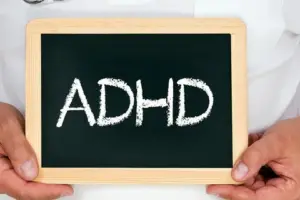Attention Deficit Hyperactivity Disorder (ADHD) is a neurodevelopmental disorder that affects millions of individuals worldwide. It’s characterized by symptoms such as inattention, hyperactivity, and impulsivity. These symptoms can vary in intensity and presentation across different age groups. Understanding the manifestations of ADHD symptoms at various stages of development is crucial for early detection and intervention. Let’s delve into the common ADHD symptoms and what to look for at different ages.
Infancy and Preschool Years
ADHD Symptoms in Infants:
While ADHD cannot be diagnosed in infants, some signs might indicate a higher risk for the disorder later in childhood. Excessively fussy babies have irregular sleep patterns or display extreme levels of activity, which might be showing early signs of hyperactivity or impulsivity.
ADHD Symptoms in Preschoolers:
Preschool-aged children with ADHD may exhibit noticeable signs such as:
- Inattention: Difficulty following instructions, easily distracted, needing help staying focused on tasks or play activities.
- Hyperactivity: Constant movement, inability to sit still during quiet activities, excessive running or climbing in inappropriate situations.
- Impulsivity: Acting without thinking, difficulty waiting for their turn, interrupting conversations or games.
School-Age Children
ADHD Symptoms in School-Age Children:
As children enter school, the symptoms of ADHD often become more apparent and impactful on their academic and social functioning. Common signs include:
- Inattention: Poor organizational skills, forgetfulness, frequent careless mistakes in schoolwork, difficulty completing tasks, and being easily distracted during school or homework.
- Hyperactivity: Restlessness, excessive talking, fidgeting or squirming in their seats, difficulty playing quietly.
- Impulsivity: Blurting out answers before questions are completed, difficulty waiting for their turn in games or group activities, frequently interrupting conversations.
It’s important to note that not all children with ADHD will exhibit all these symptoms, and the severity can vary widely among individuals.
Adolescents and Teens
ADHD Symptoms in Adolescents and Teens:
Teenagers with ADHD may continue to struggle with symptoms that impact their academic performance, social relationships, and overall well-being. Some common signs include:
- Inattention: Difficulty organizing tasks and activities, frequently losing essential items like school supplies or assignments, trouble following through on instructions or commitments.
- Hyperactivity: Restlessness, difficulty engaging in quiet activities, excessive talking or interrupting others.
- Impulsivity: Impulsive decision-making, engaging in risky behaviors without considering the consequences, and difficulty controlling emotions like anger or frustration.
Adults
ADHD Symptoms in Adults:
While ADHD is often associated with childhood, many individuals continue to experience symptoms into adulthood. Common signs of ADHD in adults include:
- Inattention: Difficulty concentrating on tasks, trouble organizing tasks and activities, forgetfulness, chronic procrastination.
- Hyperactivity: Restlessness, difficulty relaxing or sitting still, a tendency to take on multiple tasks simultaneously.
- Impulsivity: Impulsive spending, difficulty controlling anger or temper outbursts, interrupting others during conversations.
Conclusion
Recognizing the symptoms of ADHD at different ages is crucial for early intervention and effective management of the disorder. While the core symptoms of inattention, hyperactivity, and impulsivity remain consistent across the lifespan, their presentation may vary based on developmental stage and individual differences. Suppose you suspect that you or someone you know may have ADHD. In that case, it’s important to seek evaluation and support from healthcare professionals who can provide accurate diagnoses and tailored treatment options. By understanding and addressing ADHD symptoms early on, individuals can better manage their challenges and lead fulfilling lives.



